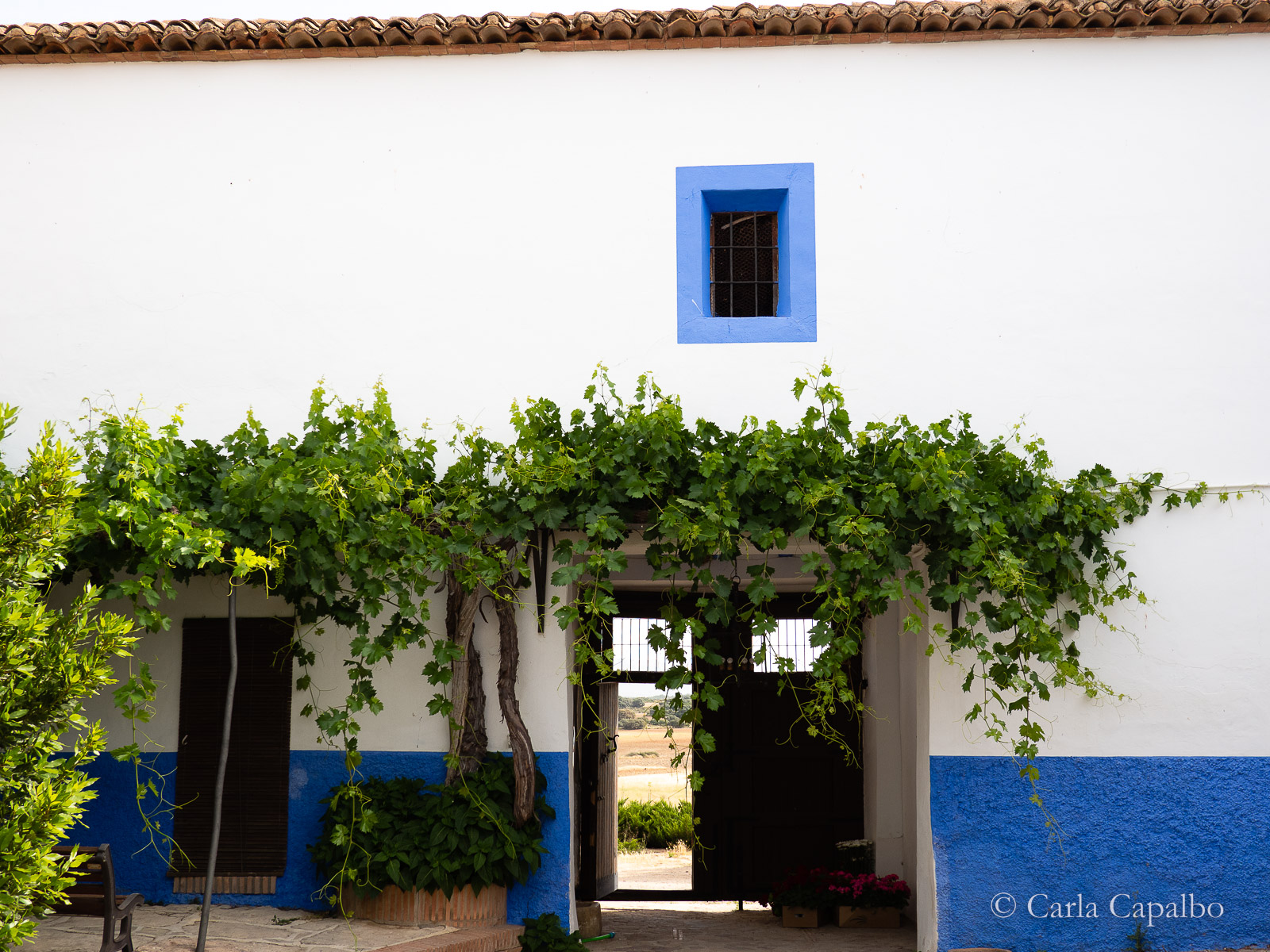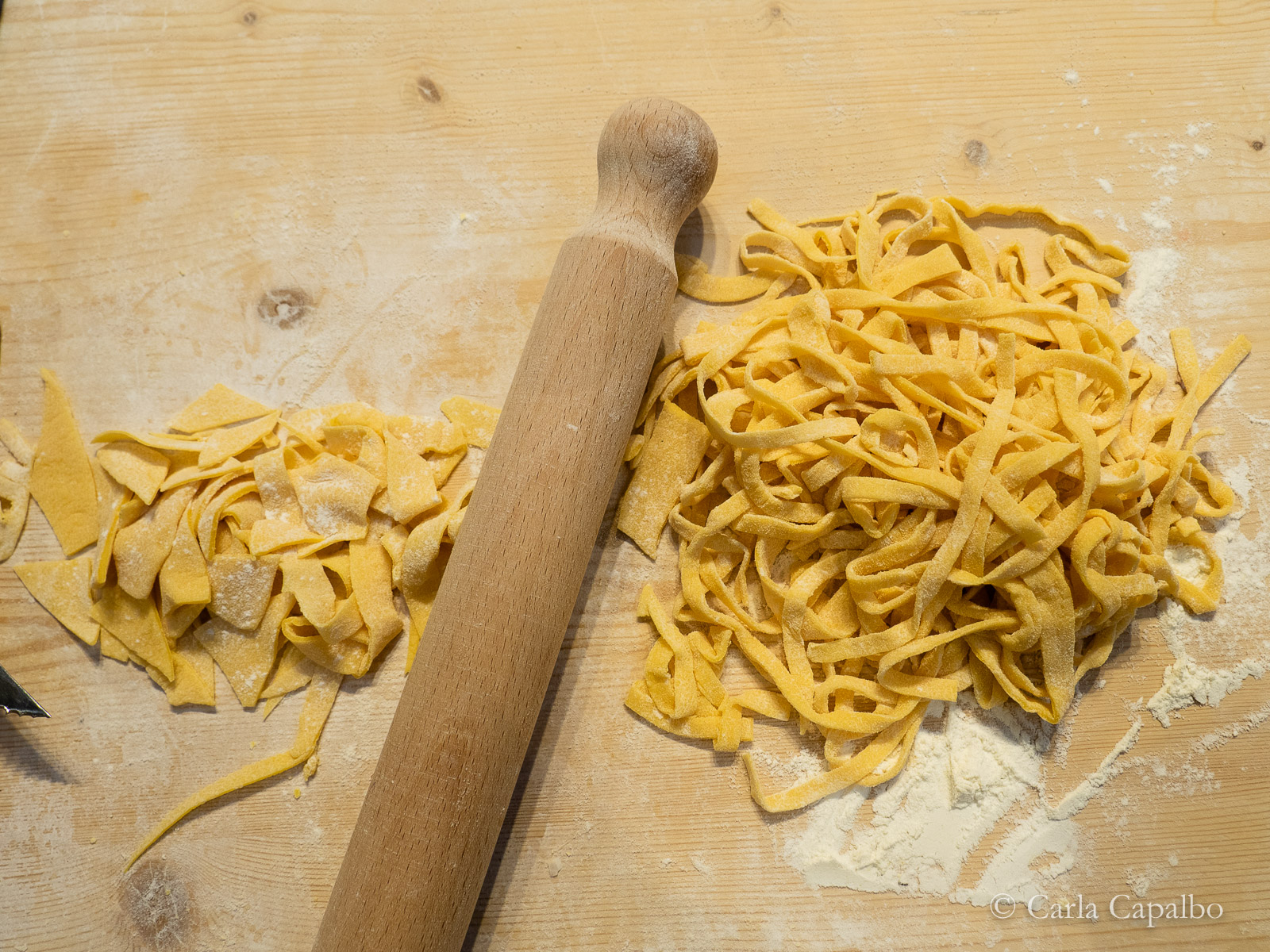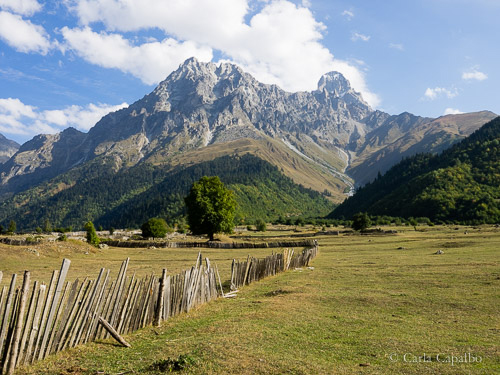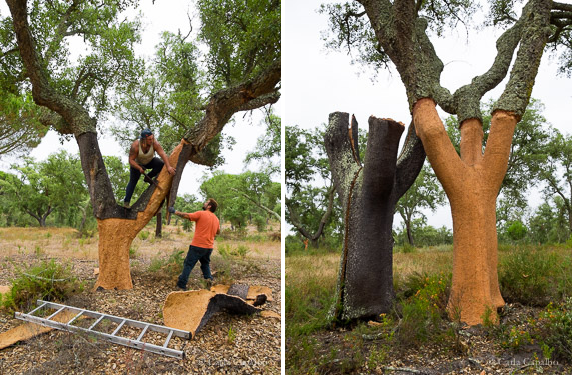This Little Piggy
December 5, 2012
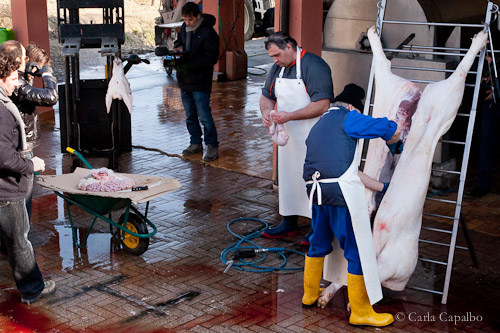
Chef Claude Bosi watches as a pig is butchered, Friuli
It’s that time of year: as winter sets in and we huddle around our fireplaces (or hot radiators) I often think of pigs. In Italy and other countries where people still keep a pig for home use, killing time is nearing. Traditionally, in pre-refrigerator times, the pig was always slaughtered in early January or February, when the air was cold enough to stop the meat from spoiling.
The pig was a crucial member of the farm: by keeping them fed all year on home-grown corn and kitchen waste and scraps (the perfect recycling machine), families watched as their pig fattened, imagining the bounty of salt-cured and fresh meats the animal would bring them. To some families this was one of the most valuable assets they had.
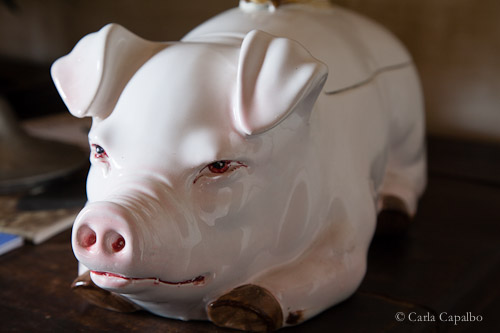
Pigs are revered in Italy
No wonder that, despite keeping the animals close at hand, in pens just behind the back door, they rarely give their pigs a name. One old man I met in Calitri, in the mountainous inner region of Campania, proudly took his pig for daily walks on a leash ‘to do his business’ yet he was scandalized when I asked what the pig was called. “Pigs don’t have names,” he grumbled, as he scratched the giant pink animal’s tummy like a dog’s.
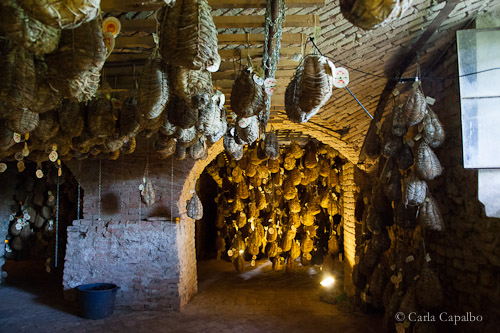
The culatello aging cellars at Antica Corte Pallavicina
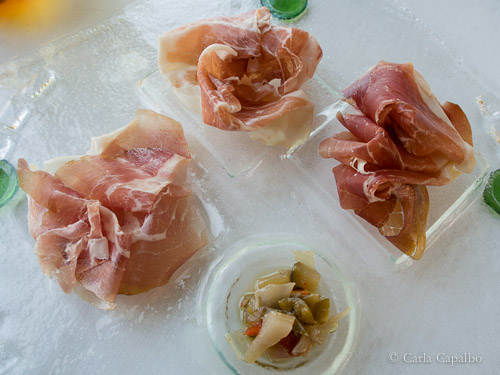
The tasting dish of culatello of three ages at Antica Corte Pallavicina
In a recent visit to Emilia Romagna for the food and wine fair, Enologica, the pork cuts on offer were many and included a few surprises. I had feasted on Antica Corte Pallavicina’s platter of aged culatelli before. This salt-cured heart of the pig’s hind leg is known as the king of salumi, and is matured for many months – even years – hanging in the moist and mouldy cellars of the atmospheric palazzo on the banks of the Po river. Of the three ‘vintages’ I was offered this time (18, 27 and 37 months) I preferred the 37-month culatello made from the leg of a black pig. It was sliced paper thin and draped softly on the plate. A deep rose madder, it regaled us with mellow flavours of caramelized sweet molasses and earthy, truffley leaf-mould to complement the pork’s fine character.

Amerigo’s polenta with sliced pig head meats
At the historic trattoria, Amerigo 1934, in the village of Savigno, near Bologna, a seasonal recipe celebrated the ‘day of the pig’s investiture’, or slaughter-day. “We always feast the pig’s killing with this dish which features all the parts of the animal’s head: cheek, tongue and eyes, sliced paper thin over steaming hot polenta,” explained the patron. Not for the faint-hearted, this winter warmer came steaming hot, with the polenta basted in the pork’s fatty juices.

The baby suckling pig at the Mark Hix restaurant, London
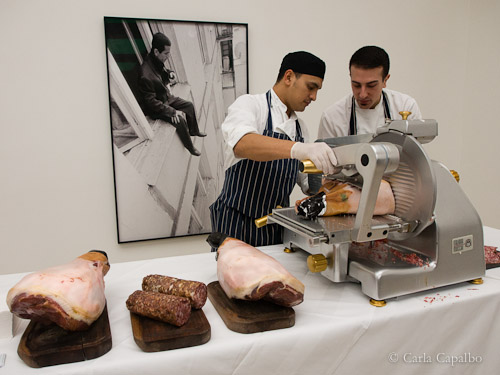
Parma ham and artwork
In London too, the pork season is in full swing. At Hix Oyster and Chop House, baby suckling British pig is on the menu, the whole animal roasted to perfection with crisp crackling and tender meat inside. It’s served on a life-size board with waxy potatoes, mustards and sauces to accompany it. Prosciutto di Parma from Manicomio featured at an elegant wine tasting at the Saatchi Gallery organized by Goedhuis Fine Wines, sliced on Italian machines brought in for the purpose. I had just visited a prosciuttificio near Parma, to watch the hams being made, so I was happy to be able to keep feeding my habit.
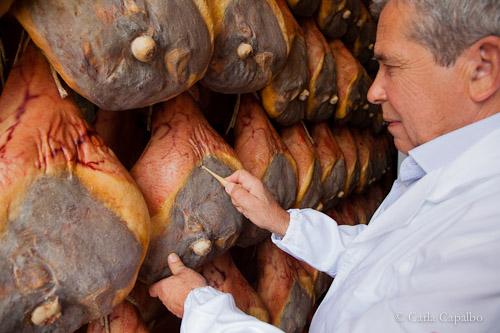
The aging prosciutti are tested frequently, Parma

